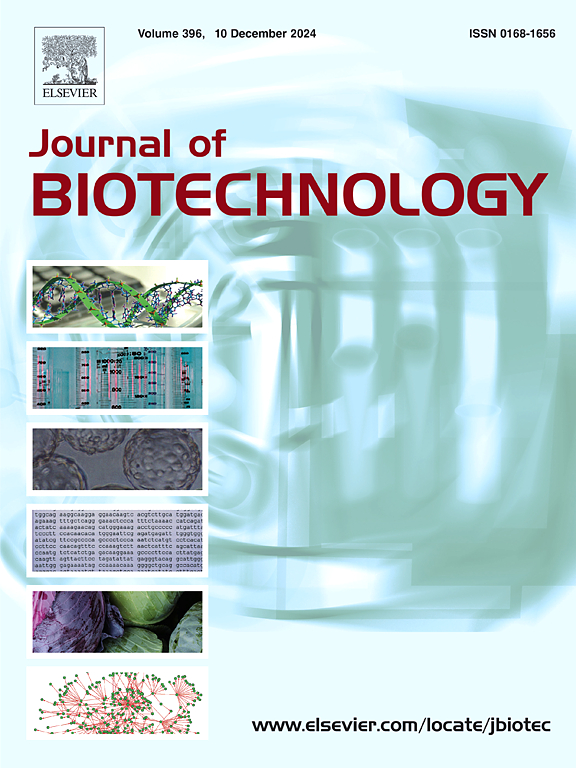Laboratory evolution and characterization of nitrate-resistant phosphite dehydrogenase (PtxD) for enhanced cyanobacterial cultivation
IF 4.1
2区 生物学
Q2 BIOTECHNOLOGY & APPLIED MICROBIOLOGY
引用次数: 0
Abstract
Phosphite dehydrogenase (PtxD) catalyzes NAD+-dependent oxidation of phosphite (Pt) to phosphate (Pi), offering various biotechnological applications, such as the creation of Pt-dependency for the biological containment of genetically modified organisms. Previously, we established a Pt-dependent cyanobacterial strain (RH714) by expressing PtxD and a reduced phosphorous compound-specific transporter (HtxBCDE) in Synechococcus elongatus PCC 7942 devoid of its endogenous Pi transporters. This strain demonstrated strict Pt dependency but failed to grow in unbuffered BG-11 medium supplemented with 2 % CO2 owing to medium acidification below approximately pH 6.5. The present study aimed to overcome this limitation by passaging the RH714 strain in an unbuffered growth medium, resulting in mutants capable of growing without buffering. The mutant strains carried a Gly157Ser mutation in the Rossmann fold domain of PtxD, leading to approximately five- and eight-fold higher Km values for NAD+ and Pt, respectively, compared with the wild-type enzyme. Interestingly, PtxDG157S exhibited enhanced resistance to nitrate, a major component of BG-11, suggesting that reduced substrate affinity mitigates nitrate inhibition at lower pH levels. Further kinetic analysis revealed that nitrate inhibits wild-type PtxD through an uncompetitive mechanism, targeting the enzyme-substrate complex at an allosteric site. Consequently, the PtxDG157S mutation reduces nitrate binding, facilitating sustained growth of Pt-dependent strains under conditions without pH buffering. These findings imply that PtxDG157S could significantly enhance the applicability of Pt-dependent cyanobacterial strain.
求助全文
约1分钟内获得全文
求助全文
来源期刊

Journal of biotechnology
工程技术-生物工程与应用微生物
CiteScore
8.90
自引率
2.40%
发文量
190
审稿时长
45 days
期刊介绍:
The Journal of Biotechnology has an open access mirror journal, the Journal of Biotechnology: X, sharing the same aims and scope, editorial team, submission system and rigorous peer review.
The Journal provides a medium for the rapid publication of both full-length articles and short communications on novel and innovative aspects of biotechnology. The Journal will accept papers ranging from genetic or molecular biological positions to those covering biochemical, chemical or bioprocess engineering aspects as well as computer application of new software concepts, provided that in each case the material is directly relevant to biotechnological systems. Papers presenting information of a multidisciplinary nature that would not be suitable for publication in a journal devoted to a single discipline, are particularly welcome.
 求助内容:
求助内容: 应助结果提醒方式:
应助结果提醒方式:


